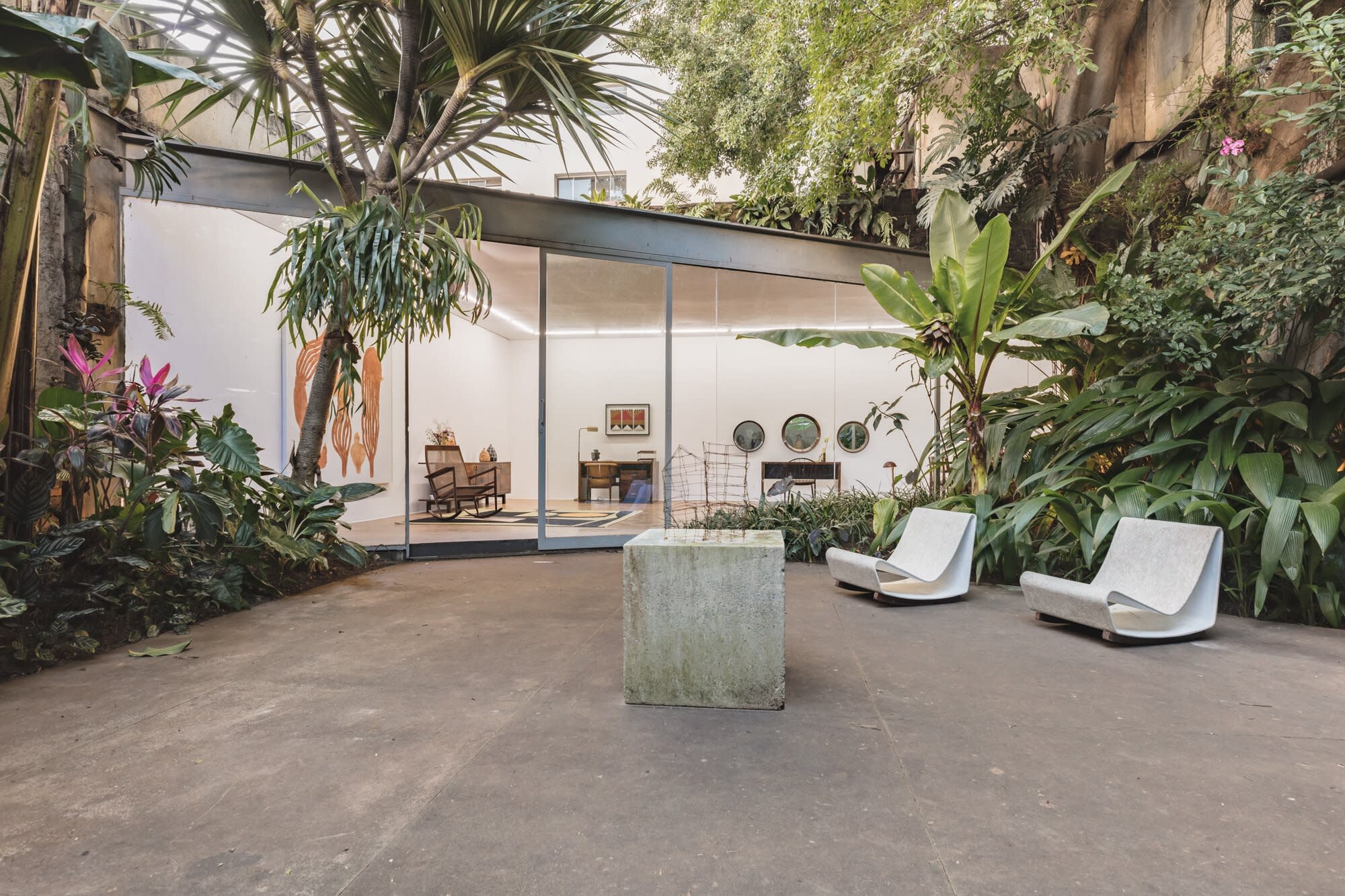-
GUHL'S LOOP CHAIR
AUGUST 31, 2020
-

Willy Guhl molding a piece
-
 Workspace Exhibition. Bossa Furniture and Mendes Wood DM, 2020
Workspace Exhibition. Bossa Furniture and Mendes Wood DM, 2020 -

-
Guhl had already determined the ergonomically correct seat profile with the help of his brother in 1947 using impressions in clay made by sitting test persons, which were then cast in plaster. Like a sculptor, Guhl then reworked the radii of the seating loop, always with a mind to the economy of production and the structural and material requirements of asbestos cement.
Since the same shape made of asbestos-free fiber cement can’t support enough weight, Guhl revised the Garden Chair in 1997. Larger radii and two reinforcing corrugations in the backrest give the loop the necessary stability. -

Schmidlin Garden (1961) Aarau, Switzerland. Phot…andscapes by Ernst Cramer’ (2001) Birkhaüser.
-

Brazilian Eternit Advertisement, 1950s
-
Cramer sought to create an indivisible unity between the houses and the gardens, but there are unmistakable elements from his hand, such as the privacy screen made from individual concrete stelae that terminates the large central courtyard/atrium in the center of the houses. Materiality defines the edges of the spaces and transitions through them. The private commitment of the garden owners ensures the preservation of the modernist residential garden to this day.
The modern man would look for everything in the garden that he would not want to do in his regular urban life. It is the flight from oneself and the expression of a 'paradisiacal state'. In this project, the Loop Chairs received prominence when mixing with the concrete interventions designed by Cramer. A beautiful example of using constructive materials as feedstock.
References:
Duncan Gibbs about Udo Weilacher, ‘Visionary Gardens: Modern Landscapes by Ernst Cramer’ (2001) Birkhaüser.











